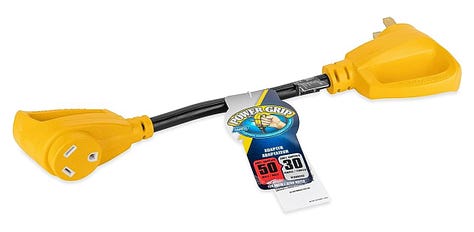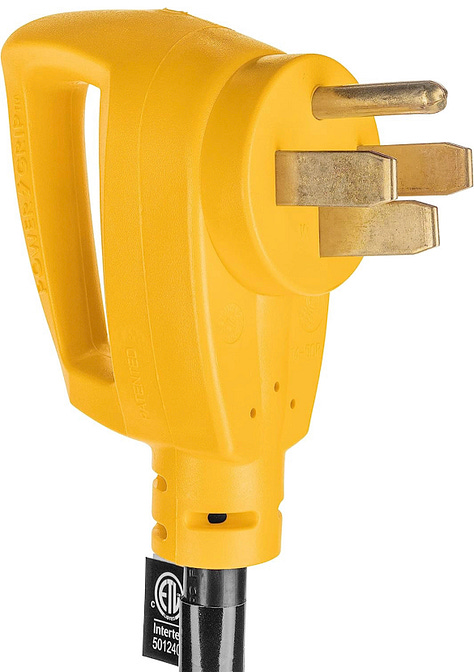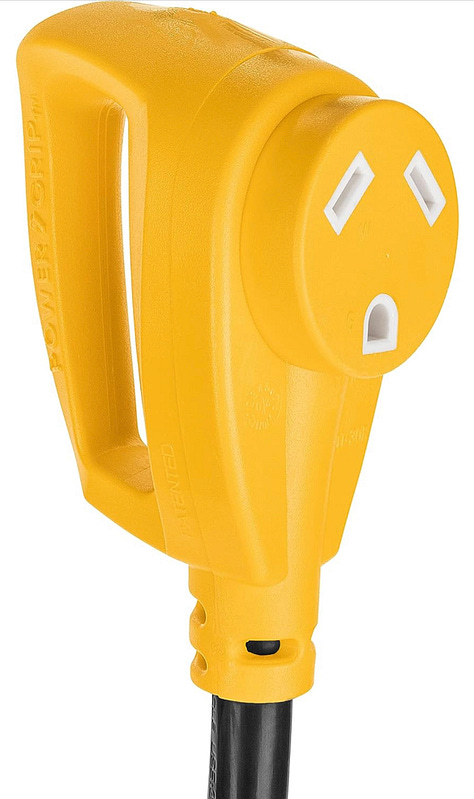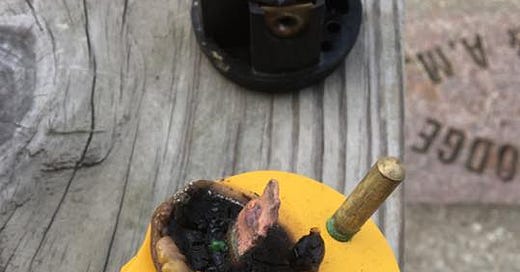Everyone,
Here’s a great reminder from a reader to recheck your 30-amp shore power plug for overheating after you’ve turned on your high current appliances such as the Air Conditioner and electric water heater.
From Michael N.
Here's a frequent scenario - RVer has a long day, comes into the campground tired and the lighting is poor. After pulling in, leveling, and hooking up, it's all to easy to overlook that the TT-30 plug isn't fully inserted - the making of a low-current, high resistance connection.
So far, no problemo until the a/c loads fire up and on goes the air conditioner, microwave oven, electric heaters, electric stoves, etc. Immediately the high resistance connection can't handle all the a/c current required and begins to get hot, Hot, HOT!!!
While it sounds silly to recheck your TT-30 to ensure the insulated plug isn't getting hot when you start turning on large current draw sources, I can guarantee that for those of us who have learned the hard way - we've found the religion to at least have a flashlight and closely double-check the connection, if not come back later when devices in the RV are fired up. Or as my Danish friend's father would tell him, "Either you LISTEN or you will FEEL!" Michael N.
Back to me….
That’s great advice. I think it’s also a good idea to do a daily check of your shore power plug to make sure it’s fully seated in the outlet and look for any signs of overheating. If it feels hot to the touch then you should make the campground manager aware of the problem and ask him to replace that pedestal outlet before you damage your shore power plug or Surge Protector. Do NOT replace a pedestal outlet yourself!
Bring a 50 to 30-amp adapter
This is also why a lot of RVers with a 30-amp RV carry a 50/30-amp dogbone adapter. Many times the 50-amp outlet on the pedestal is much less worn than the 30-amp outlet. You can get one on Amazon HERE.



If you already have a 30-amp Power Watchdog Surge Protector from Hughes, then it includes a 30-Amp overcurrent shutoff. And if not, then the 30-amp main circuit breaker in your RV should protect your shore power cord from too much current.
Let’s play safe out there… Mike






There have been lots of examples of fried shore power cables attributed to loose connections at the pedestal. A heavy surge suppressor attached to a heavy power cable will impart a rotational force on the pedestal receptacle which could cause the male surge suppressor end to rotate out of the pedestal receptacle. My confidence in parks replacing a loose receptacle at my request is low. They would rather give me a different site.
Are there methods or tricks that you recommend be used to ensure the male plug maintains good contact with the pedestal receptacle? Bungies? Reusable thick cable ties? Ratchet strap? These methods could be problematic for a pedestal with power on both sides.
That’s great information but please reiterate that a “Surge Suppressor”, be it a simple suppressor or sophisticated EMS, cannot protect from this type of failure.